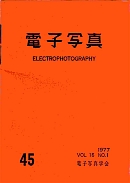Volume 8, Issue 3
Displaying 1-4 of 4 articles from this issue
- |<
- <
- 1
- >
- >|
-
1968Volume 8Issue 3 Pages 3_72-3_77
Published: July 31, 1968
Released on J-STAGE: March 14, 2014
Download PDF (942K) -
1968Volume 8Issue 3 Pages 3_78-3_85
Published: July 31, 1968
Released on J-STAGE: March 14, 2014
Download PDF (1097K) -
1968Volume 8Issue 3 Pages 3_86-3_91
Published: July 31, 1968
Released on J-STAGE: March 14, 2014
Download PDF (1166K) -
1968Volume 8Issue 3 Pages 3_92-3_100
Published: July 31, 1968
Released on J-STAGE: March 14, 2014
Download PDF (1211K)
- |<
- <
- 1
- >
- >|
